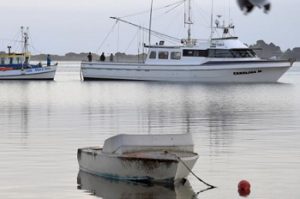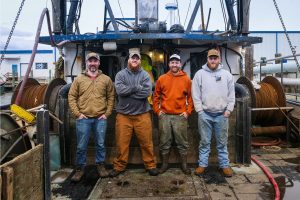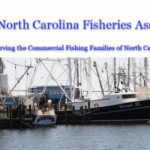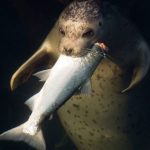Daily Archives: January 5, 2016
Fishing violation nets Wrangell father, son $100K fine
 An Alaskan federal judge on Monday fined a Wrangell father and son $100,000 for lying about where they were fishing for halibut in the Gulf of Alaska, according to a news release from the U.S. Attorney’s Office for the District of Alaska. U.S. District Court Judge Timothy Burgess imposed the sentence for Charles “Chuck” J. Petticrew Sr., 70, and Charles “Jeff” J. Petticrew Jr., 42, in Juneau federal court. Both defendants had entered into a plea agreement and agreed to pay the fine when they pled guilty to violating the Lacey Act in October. ,,, Read the article here 21:13
An Alaskan federal judge on Monday fined a Wrangell father and son $100,000 for lying about where they were fishing for halibut in the Gulf of Alaska, according to a news release from the U.S. Attorney’s Office for the District of Alaska. U.S. District Court Judge Timothy Burgess imposed the sentence for Charles “Chuck” J. Petticrew Sr., 70, and Charles “Jeff” J. Petticrew Jr., 42, in Juneau federal court. Both defendants had entered into a plea agreement and agreed to pay the fine when they pled guilty to violating the Lacey Act in October. ,,, Read the article here 21:13
Oregon and Washington – Crab quality, quantity, prices all good
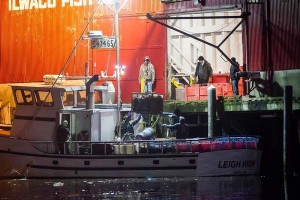 It’s only a few days into this year’s commercial Dungeness crab season and fishermen already believe they are looking at a better run than last year. Dan Ayres, coastal shellfish manager with the Washington Department of Fish and Wildlife, won’t have initial landing numbers for another week or so but, he said, “The word we’re getting from the fleet is that it looks better than last year.” After getting the all-clear from state health departments, commercial Dungeness crab fishermen finally hit the water Jan. 4 after being delayed for weeks due to elevated levels of the marine toxin domoic acid. Read the article here 19:04
It’s only a few days into this year’s commercial Dungeness crab season and fishermen already believe they are looking at a better run than last year. Dan Ayres, coastal shellfish manager with the Washington Department of Fish and Wildlife, won’t have initial landing numbers for another week or so but, he said, “The word we’re getting from the fleet is that it looks better than last year.” After getting the all-clear from state health departments, commercial Dungeness crab fishermen finally hit the water Jan. 4 after being delayed for weeks due to elevated levels of the marine toxin domoic acid. Read the article here 19:04
Republican presidential candidate John Kasich to meet with N.H. fishermen
 The Ohio governor will meet privately with commercial and recreational fishermen and industry members from 3 to 4 p.m. at Yankee Fisherman’s Cooperative after he holds a noon town hall event at the Lane Memorial Library in Hampton. Kasich became aware of the fishermen’s concern about regulations via a Wall Street Journal op-ed written by David Goethel. The op-ed ran Dec. 27 and detailed Goethel’s current federal lawsuit against the U.S. Department of Commerce and the National Oceanic and Atmospheric Administration. Read the article here 16:18
The Ohio governor will meet privately with commercial and recreational fishermen and industry members from 3 to 4 p.m. at Yankee Fisherman’s Cooperative after he holds a noon town hall event at the Lane Memorial Library in Hampton. Kasich became aware of the fishermen’s concern about regulations via a Wall Street Journal op-ed written by David Goethel. The op-ed ran Dec. 27 and detailed Goethel’s current federal lawsuit against the U.S. Department of Commerce and the National Oceanic and Atmospheric Administration. Read the article here 16:18
New Study: Injuries among Dungeness crab fishermen examined
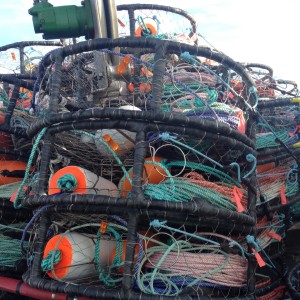 Commercial Dungeness crab fishing on the West Coast is one of the highest risk occupations in the United States, based on fatality rates. But non-fatal injuries in the fishery appear to go largely unreported, a new study from Oregon State University shows. While the fatality rates in the Dungeness crab fleet have been reported in the past, the incidence of non-fatal injuries have not been previously studied, said Laurel Kincl, an assistant professor of environmental and occupational health and safety in the . Read the article here 15:39
Commercial Dungeness crab fishing on the West Coast is one of the highest risk occupations in the United States, based on fatality rates. But non-fatal injuries in the fishery appear to go largely unreported, a new study from Oregon State University shows. While the fatality rates in the Dungeness crab fleet have been reported in the past, the incidence of non-fatal injuries have not been previously studied, said Laurel Kincl, an assistant professor of environmental and occupational health and safety in the . Read the article here 15:39
Coast Guard medevacs fisherman near Eastport, Maine
A Coast Guard 45-foot motor lifeboat crew from Station Eastport medevaced a man from the 35-foot fishing vessel 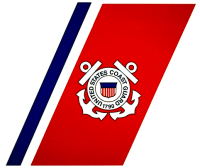 Monday. Watchstanders at Coast Guard Sector Northern New England’s command center received a call via VHF-16 radio at 4:20 p.m. from the captain of the Latta II reporting one of his crewmembers had sustained injuries to his left hand while operating a winch. A 45-foot motor lifeboat crew from Station Eastport launched and arrived on scene at 4:49 p.m. and took the man aboard. Read the report here 13:14
Monday. Watchstanders at Coast Guard Sector Northern New England’s command center received a call via VHF-16 radio at 4:20 p.m. from the captain of the Latta II reporting one of his crewmembers had sustained injuries to his left hand while operating a winch. A 45-foot motor lifeboat crew from Station Eastport launched and arrived on scene at 4:49 p.m. and took the man aboard. Read the report here 13:14
NOAA scientists admit in private that they can’t name any place affected by ocean acidification
 There’s the truth, then there’s the whole truth. From a climate expert at NOAA, the study of ocean acidification is so young “they don’t have any data sets that show a direct effect of OA on population health” and they can’t name any place in the world that is definitely affected by it. at Junkscience.com FOIA’d emails among NOAA scientists discussing a NY times op-ed draft. The editor was serving up an apocalypse: Our Deadened, Carbon-Soaked Seas by Richard W. Spinrad and Ian Boyd, …and he wanted all the dirt: Can the authors give us more specific, descriptive images about how acidification has already affected the oceans? Read the post here 12:57
There’s the truth, then there’s the whole truth. From a climate expert at NOAA, the study of ocean acidification is so young “they don’t have any data sets that show a direct effect of OA on population health” and they can’t name any place in the world that is definitely affected by it. at Junkscience.com FOIA’d emails among NOAA scientists discussing a NY times op-ed draft. The editor was serving up an apocalypse: Our Deadened, Carbon-Soaked Seas by Richard W. Spinrad and Ian Boyd, …and he wanted all the dirt: Can the authors give us more specific, descriptive images about how acidification has already affected the oceans? Read the post here 12:57
WATCH: Norwegian fishermen rescued after boat capsizes in icy waters
 Five fishermen are lucky to be alive following a dramatic rescue from the icy waters off Norway’s coast Monday. Norway’s 330 Rescue Squadron captured The Norwegian Veritas dip below the surface moments after plucking its crewmembers out of the choppy Norwegian Sea. The rescue happened off the coast of Lofotodden, Norway, which sits above the Arctic Circle. All five fishermen had been tossed into the water prior to the coast guard’s Sea King helicopter arriving. Video, read the rest here 11:14
Five fishermen are lucky to be alive following a dramatic rescue from the icy waters off Norway’s coast Monday. Norway’s 330 Rescue Squadron captured The Norwegian Veritas dip below the surface moments after plucking its crewmembers out of the choppy Norwegian Sea. The rescue happened off the coast of Lofotodden, Norway, which sits above the Arctic Circle. All five fishermen had been tossed into the water prior to the coast guard’s Sea King helicopter arriving. Video, read the rest here 11:14
Tobique First Nation fishery mired in court battles, band council split
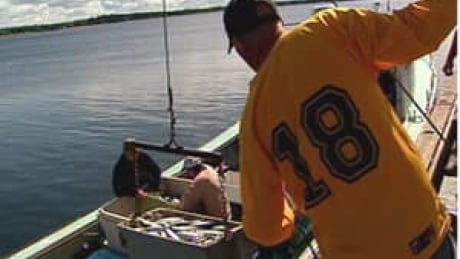 The future of the Tobique First Nation’s commercial fishery is up in the air after the latest courtroom battle between the band and the companies running its commercial fishery. Last week, a Court of Queen’s Bench judge quashed a last-minute attempt by Yarmouth Sea Products to continue fishing the band’s licence as a subcontractor to a U.S. firm. “We’re not very pleased, obviously,” said Gerard Doucet, the company’s general manager. The Yarmouth company was hired by Rhode Island-based Maritime Specialty Foods Inc. to fish for scallops and lobster on Tobique’s commercial licence. Read the article here 11:02
The future of the Tobique First Nation’s commercial fishery is up in the air after the latest courtroom battle between the band and the companies running its commercial fishery. Last week, a Court of Queen’s Bench judge quashed a last-minute attempt by Yarmouth Sea Products to continue fishing the band’s licence as a subcontractor to a U.S. firm. “We’re not very pleased, obviously,” said Gerard Doucet, the company’s general manager. The Yarmouth company was hired by Rhode Island-based Maritime Specialty Foods Inc. to fish for scallops and lobster on Tobique’s commercial licence. Read the article here 11:02
EPA approves “vertebrate pheromone biopesticide” to battle dreaded Great Lakes Sea Lamprey
 After decades of development and testing, an effort to use pheromones to fool the sex drive of lampreys in the Great Lakes has been deemed “good enough” to be registered by the U.S. Environmental Protection Agency. The EPA last week registered the pheromone, 3kPZS, as the first “vertebrate pheromone biopesticide” authorized for use in U.S. waters. While it’s worked in test efforts, it’s now hoped that the pheromone, when poured into rivers, will attract adult lampreys on a large scale to a specific spot where they can be captured and destroyed before,,, Read the article here 08:00
After decades of development and testing, an effort to use pheromones to fool the sex drive of lampreys in the Great Lakes has been deemed “good enough” to be registered by the U.S. Environmental Protection Agency. The EPA last week registered the pheromone, 3kPZS, as the first “vertebrate pheromone biopesticide” authorized for use in U.S. waters. While it’s worked in test efforts, it’s now hoped that the pheromone, when poured into rivers, will attract adult lampreys on a large scale to a specific spot where they can be captured and destroyed before,,, Read the article here 08:00

































